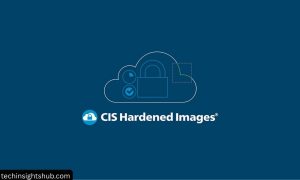Web applications face constant threats from cybercriminals worldwide. Security breaches cost companies millions in damages and reputation loss. Modern applications require robust protection against evolving cyberattacks. Developers often struggle with implementing proper security measures. Many focus solely on functionality while ignoring critical security risks. This approach leaves applications vulnerable to common attacks, such as SQL injection and broken access control. Security must be integrated throughout the development process. Waiting until deployment creates expensive fixes and potential security holes. Organizations need comprehensive strategies that address multiple attack vectors simultaneously. Here are 8 best practices for securing web applications.
Adopt a Cybersecurity Framework
Building Strong Security Foundations

Cybersecurity frameworks offer a structured approach to application security. Organizations benefit from established guidelines rather than creating custom solutions. Frameworks such as NIST and ISO 27001 provide proven methodologies for managing security risks.
Security professionals recommend starting with threat modeling exercises. These sessions identify potential vulnerabilities before development begins. Teams can prioritize resources based on actual risk levels rather than assumptions.
Framework implementation requires ongoing commitment from leadership. Security cannot be an afterthought in modern software development culture. Companies must allocate sufficient resources for proper security implementation and maintenance.
Regular security reviews ensure frameworks remain effective against new threats. Cyber threats evolve rapidly, requiring adaptive security measures. Organizations should continually update their security posture to address emerging vulnerabilities and changing attack patterns.
Measuring Security Effectiveness
Security metrics help organizations track their progress over time. Key performance indicators should include vulnerability detection rates and incident response times. These measurements provide concrete data on the effectiveness of the security program.
Continuous monitoring tools automatically detect suspicious activities and potential breaches. Real-time threat detection enables faster response to security incidents. Automated systems can identify patterns that human analysts might miss.
Security audits validate the implementation of the framework across all systems. Independent assessments reveal gaps in security controls and procedures. External audits provide objective evaluations of organizational security posture.
Set up Authentication and Access Control
Implementing Multi-Factor Authentication
Strong authentication mechanisms protect user accounts from unauthorized access. Multi-factor authentication significantly reduces the success rate of brute force attacks. Users must provide multiple verification methods to access sensitive systems.
Password management practices should enforce complex requirements and regular updates. Generic passwords create easy targets for cybercriminals. Organizations must educate users about creating secure passwords and avoiding common mistakes.
Authentication updates should address emerging threats and vulnerabilities. Legacy authentication systems often contain security holes that attackers exploit. Regular system updates prevent known vulnerabilities from compromising user accounts.
Managing User Access Privileges
Access control systems limit user permissions based on job requirements. Privilege escalation attacks target systems with excessive user permissions. Implementing least-privilege principles reduces potential damage from compromised accounts.
User identities require careful management throughout their lifecycle. Account creation, modification, and deletion must follow established procedures. Orphaned accounts create security vulnerabilities that attackers can exploit.
Role-based access control simplifies permission management for large organizations. Administrators can assign permissions based on job functions rather than individual users. This approach reduces administrative overhead while maintaining security standards.
Code access levels should match developer responsibilities and project requirements. Excessive code privileges enable insider threats and accidental damage. Organizations must balance developer productivity with security requirements.
Prevent Security Misconfigurations
Identifying Common Configuration Errors
Security misconfigurations are among the most common security vulnerabilities. Default configurations often prioritize functionality over security. Administrators must customize settings to align with their organization’s security requirements.
Server configuration requires careful attention to security settings and access controls to ensure optimal security. Misconfigured servers expose sensitive data and system resources to attackers. Regular configuration reviews help identify potential security weaknesses before they can be exploited.
Software updates address known vulnerabilities and configuration issues. Outdated software versions contain security holes that cybercriminals actively exploit. Organizations must maintain current software versions across all systems.
Establishing Configuration Management
Configuration management processes ensure consistent security settings across environments. Manual configuration changes often introduce errors and security gaps. Automated configuration tools reduce human error while improving consistency.
Regular security checks validate configuration settings against established baselines. Drift detection identifies unauthorized changes that could compromise security. Automated monitoring systems alert administrators to configuration violations.
Documentation helps teams understand configuration requirements and procedures. Clear documentation reduces errors during system changes and updates. Knowledge transfer becomes easier when configuration procedures are well-documented.
Secure Use of Open-Source Components
Managing Project Dependencies
Open-source components introduce both benefits and security risks to applications. Project dependencies often contain known vulnerabilities that attackers can exploit. Organizations must carefully evaluate and monitor all third-party components.
Software component inventories track all external libraries and frameworks used by the software. Unknown dependencies create blind spots in security assessments. Complete visibility enables better risk management and vulnerability tracking.
Dependency updates should be thoroughly tested before being deployed in production. Updates sometimes introduce breaking changes or new vulnerabilities. Staged deployment processes minimize risks associated with component updates.
Vulnerability Scanning and Management
Automated scanning tools identify vulnerable components within application codebases. These tools compare component versions against known vulnerability databases. Early detection enables proactive remediation before exploitation occurs.
Vulnerability databases provide current information about component security issues. Organizations should subscribe to relevant security feeds and alerts to stay informed. Timely information enables a faster response to newly discovered vulnerabilities.
Patch management processes ensure timely updates for vulnerable components, thereby maintaining system security. Critical vulnerabilities require immediate attention and emergency patching procedures. Organizations must balance the urgency of updates with the stability requirements.
Adopt Exception Management
Handling Application Errors Securely
Exception management prevents the disclosure of sensitive information through error messages. Poor error handling often reveals system details that attackers can exploit, making it easier for them to compromise the system. Applications should provide generic error messages to users while logging detailed information internally.
Error logging systems capture detailed information for debugging and security analysis. Comprehensive logs enable developers to identify and resolve application issues quickly. Security teams utilize logs to identify attack patterns and detect suspicious activities.
Log management practices ensure secure storage and access to error information. Centralized logging systems simplify analysis and correlation across multiple applications. Access controls protect sensitive log data from unauthorized disclosure.
Monitoring and Response Procedures
Continuous monitoring systems analyze error patterns for security indicators. Unusual error rates might indicate ongoing attacks or system compromises. Automated alerting enables faster response to potential security incidents.
Incident response procedures define actions for different types of security events. Clear procedures reduce response times and improve coordination during incidents. Regular testing ensures procedures remain effective and current.
Security incident documentation helps organizations learn from past events. Post-incident analysis identifies improvements for future prevention and response. Knowledge sharing strengthens overall organizational security capabilities.
Adhere to Container Security Best Practices
Securing Container Images
Container security requires attention to base images and application layers. Vulnerable base images introduce security risks to all derived containers. Organizations should use trusted image sources and regularly update base images.
Image scanning tools identify vulnerabilities within container layers and dependencies. Automated scanning integrates into development pipelines for early vulnerability detection. Critical vulnerabilities should block deployments until remediation occurs.
Image signing ensures container integrity and authenticity throughout deployment. Digital signatures prevent tampering and verify image sources. Organizations should implement signing requirements for production deployments.
Runtime Security Controls
Runtime security monitors container behavior for suspicious activities. Behavioral analysis detects anomalies that might indicate compromise or attack. Real-time monitoring enables immediate response to security threats.
Network segmentation limits communication between containers and external systems. Micro-segmentation reduces attack surfaces and contains potential breaches. Network policies should follow least-privilege principles.
Resource limits prevent containers from consuming excessive system resources. Resource exhaustion attacks can disrupt services and affect system stability. Proper limits ensure fair resource allocation and system reliability.
Adopt Quality Assurance and Security Testing
Integrating Security into Testing
Security testing should occur throughout the development lifecycle rather than just before release. Early testing identifies vulnerabilities when fixes are less expensive. Shift-left approaches embed security into development workflows.
Automated testing tools perform consistent security assessments across code changes. Manual testing cannot keep pace with modern development velocities. Automated tools scale security testing without increasing personnel requirements.
Penetration testing simulates real-world attacks against applications and systems. External security experts provide objective assessments of security posture. Regular penetration tests validate security controls and identify weaknesses.
Code Review and Static Analysis
Code review processes examine source code for security vulnerabilities and issues. Peer reviews catch problems that individual developers might miss. Security-focused reviews specifically look for common vulnerability patterns.
Static analysis tools automatically scan code for potential security issues. These tools identify problems like SQL injection and cross-site scripting vulnerabilities. Integration with development environments provides developers with immediate feedback.
Secure coding practices prevent many common vulnerabilities from entering applications. Developer training programs teach secure coding techniques and common pitfalls. Regular training updates address new types of vulnerabilities and emerging attack methods.
Incorporate Security into the CI/CD Process
Automated Security Gates
Continuous integration pipelines should include automated security checks at multiple stages. Security gates prevent vulnerable code from reaching production environments. Failed security checks should block deployment until issues are resolved.
Security scanning tools integrate with popular CI/CD platforms and development tools. Seamless integration encourages adoption and reduces friction for development teams. Tool selection should consider compatibility with existing development workflows.
Policy enforcement ensures consistent security standards across all applications and teams. Centralized policies reduce configuration errors and improve compliance. Policy updates can be deployed automatically across all pipelines.
Continuous Security Monitoring
Production monitoring extends security oversight beyond the development and testing phases. Runtime security monitoring detects attacks and anomalies in live systems. Continuous monitoring provides ongoing security validation for deployed applications.
Security metrics from CI/CD processes provide visibility into the effectiveness of a security program. Trend analysis identifies improvements and recurring issues across development teams. Data-driven decisions improve security outcomes over time.
Feedback loops connect production security events back to development processes. Security incidents should trigger reviews of development and testing procedures. Continuous improvement cycles strengthen security capabilities across the organization.
Conclusion
Web application security requires comprehensive approaches that address multiple threat vectors. Organizations cannot rely on a single security measure to protect against sophisticated attacks. Layered security strategies provide robust protection against evolving cyber threats.
Implementation success depends on organizational commitment and resource allocation. Security initiatives require ongoing investment in tools, training, and personnel. Short-term costs prevent much larger expenses from successful security breaches.
Regular assessment and improvement ensure security measures remain effective against new threats. Cybersecurity is not a one-time implementation but an ongoing process. Organizations must adapt their security posture as threats and technologies evolve.
The investment in proper security practices pays dividends through reduced risk and improved customer trust. Secure applications offer a competitive advantage in markets where data protection is a priority. Security-conscious organizations build stronger relationships with customers and partners.
Also Read: How to use workflow job templates in Ansible
FAQs
The most common vulnerabilities include SQL injection, cross-site scripting, broken access control, and security misconfigurations. These represent the majority of successful attacks against web applications.
Security testing should occur continuously throughout development and after deployment. Automated testing runs with every code change, while comprehensive assessments happen quarterly or after major releases.
Multi-factor authentication provides the strongest protection by requiring multiple verification methods. Combining passwords with biometrics or hardware tokens significantly reduces unauthorized access risks.
Organizations should maintain component inventories, use vulnerability scanning tools, and establish update procedures. Regular monitoring of security advisories enables proactive risk management.




